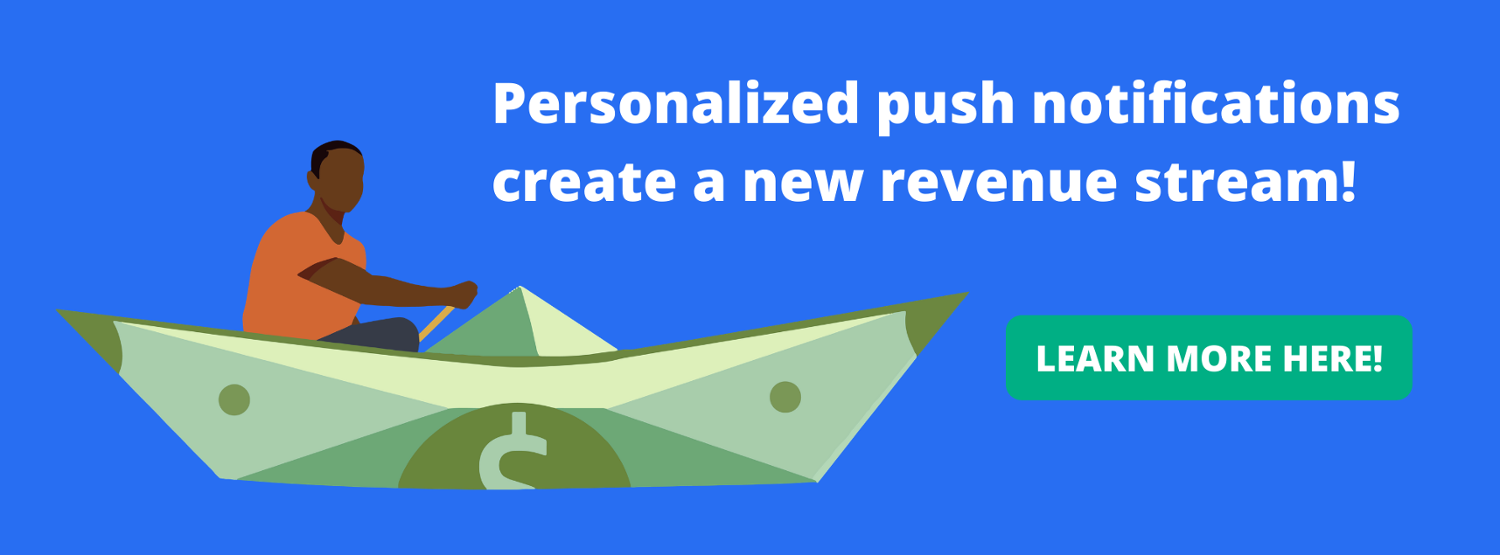Push notifications are opt-in, real-time alerts that are delivered directly to each user’s screen — whether you want to reach them on web browsers or mobile devices.

And publishers can use them to drive re-engagement, share trending stories, or offer special discounts. In fact, 72% of consumers have enabled push notifications and over half of audiences want them for breaking news in 2021.
The question now is: If push notifications are so distinctive and versatile, how do you actually track their performance and ensure you’re making the most of your push campaigns? Especially if you’re monetizing push notifications with ads, you want to know how much revenue you’re driving and how many eyes you can promise your ad partners.

Make sure you track these seven push notification metrics to most effectively gauge and optimize your campaigns.
Push notification performance metrics you should track
1. View rate
View rate is the number of people who saw your push notifications divided by the number of push notifications sent. So if you sent 1,000 push notifications and you received 1,000 views, your view rate is 100%.
That brings us to one of the biggest benefits of web push notifications: a virtually guaranteed view rate of 100%. Since push notifications pop up on someone’s browser while they’re active, they’ll basically always see them. And you’ll always get your message across.
2. Open rate
Open rate or clickthrough rate is the number of people who clicked on your push notifications divided by the number of people who saw your push notifications. Remember that these notifications often are clickable, allowing publishers to include hyperlinks to articles, landing pages, and product pages.
So if 1,000 people saw your push notifications and 250 people clicked on them, your open rate is 25%.
3. Time spent on page
This metric is pretty self-explanatory. It refers to the time a user spent on your web page after clicking through to it. So if you launch a push notification linking people to an article, you can measure the average time visitors spent on that article page to get a better idea of how engaged they were with the targeted content.
4. Conversion rate
Conversion rate refers to the number of people who took a desired action after viewing your push notification. For example, maybe you wanted them to sign up for a newsletter, start a free trial, download an app, or make a purchase.
5. Opt-in rate
Opt-in rate helps you gauge how well your list of push subscribers is growing. Say you launch email campaigns to acquire push notification subscribers. You’ll want to know how those campaigns are performing so you can keep running that messaging and optimize it accordingly. You can do that by tracking the opt-in rate, or the number of people who sign up for push alerts divided by the number of people reached with your acquisition efforts.
6. Opt-out rate
Opt-out rate, on the other hand, measures how often people unsubscribe from your push notifications. If your notifications are too frequent, for example, or not personalized enough to users’ interests, you might see people opt out. That means it’s time to rethink your push campaign strategy.
7. Re-engagement rate
You might not always get people to click or convert right away. With the right data signals, you can re-engage them with more relevant push notifications. For instance, you might send cart abandonment reminders or keep reaching people with timely messaging until you grab their attention.
Track the success of these strategies by measuring your re-engagement rate, which is the number of people who convert after seeing a re-engagement notification divided by the number of re-engagement notifications sent.


